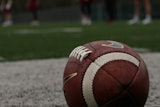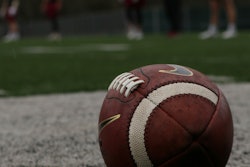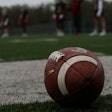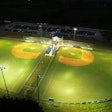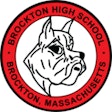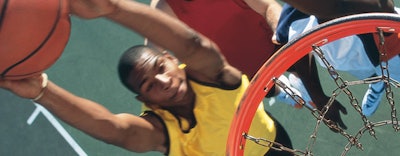
After the September shooting of 13 people at a southside park in Chicago, the cry rose again: get basketball out of the parks. From gang violence and drug use to littering and foul language, park basketball courts have been hailed as a nuisance in many communities over the years, prompting residents to call for their removal.
"We're fortunate that we're not like other areas with homicides occurring on a daily basis," Lafayette, Ind., police chief Pat Flannelly told The Journal Courier this summer in response to the city's decision to remove hoops at one of its parks, "and we intend to keep it that way."
While they pale in comparison to gang violence, issues of noise and littering are a much more common example of the type of behavior that puts basketball courts in disfavor with neighbors. "The basketball rims at Memorial Park will be removed for two weeks," Williamsport, Pa., Mayor Gabriel Campana wrote to the Williamsport Sun Gazette this summer. "A lesson will be taught as a father and mother teaches their children. If the behavior improves, the courts will remain. If not, I will consider removing the basketball rims permanently. We cannot enable bad behavior."
The extent to which basketball courts "enable bad behavior" and crime, however, has been blown out of proportion. A 2011 study published in Security Journal examined the incidence of crime in Philadelphia's neighborhood parks over a seven-month period. While the research did suggest that crime rates in park areas tended to be higher than the citywide crime rate, it was not the case with all parks. Moreover, the study found that any place that attracted crowds — a shopping mall, for example — tends to have a higher incidence of crime.
Park basketball courts may not be the magnet for crime that some community members paint them out to be, but neither are they incident-free. So what can a parks and recreation department do to set up their basketball facilities (and end users) for success?
GET ORGANIZED
The researchers behind the study in Security Journal considered a variety of other park factors and their relation to crime rates — accessibility, surveillance and guardianship, as well as "activity generators" such as recreational fields and courts. They found that the presence of activity spaces correlated to a decrease in crime rates in parks. The more activities available and the more organization, the more the crime level was reduced.
Enter programs like Chicago's Windy City Hoops, which turns basketball at 11 Chicago parks in high-crime areas into an organized event. "In those communities, crime and violence have gone down," says Tony McCoy, a supervisor and 19-year veteran with the Chicago Park District. The program helps tackle one of the biggest issues plaguing the area: gang violence. "From my experience, any sport, not just basketball, helps with conflict resolution," says McCoy. "You get aggression out, you get exercise."
Eleven sites serve 100 to 150 youths each, and the program is organized into six-week sessions. The role of the parks department in organizing and overseeing the games is crucial to their success, says McCoy. Teenagers are not the most exemplary members of society, though some are more mature than others. Generally speaking, giving them freedom without structure is a good way to set them up for trouble. "Basketball is one of those sports where you have disagreements and arguments," McCoy says. "But if you have strong mentors and good referees, it is successful."
Proper planning also allows the program to address the gang tensions within communities. Says McCoy, "One kid might be in one gang and another in another gang, but they're both on the same basketball team. When you know each other, you're less likely to harm or have a conflict off the court. It doesn't eliminate it totally, but it helps."
To bring down boundaries not just within communities but between communities, the program also ends each session with an organized all-star tournament. The tournaments will rotate between the participating parks, giving the youths a chance to interact with their peers from other communities and help familiarize them with more of the park district's facilities. "They look forward to it," says McCoy, who is just as excited about the program. "We'll mix them up and tear these barriers down, eliminate murders, shootings and criminal activity."
BUILD A CONNECTION
Though McCoy admits that these larger issues won't be eliminated overnight, the program has already made a noticeable impact when it comes to combating the more common issues associated with basketball courts, such as litter and graffiti. "They care about the spot they're playing in," says McCoy. "They don't want to tear up where they're playing. They're taking ownership in their community."
More than just irritating neighbors, disrespect for park facilities — if only in the form of litter — often makes other park visitors feel unwelcome or unsafe, as well as lays the ground for more serious altercations. Luckily, it doesn't take an organized league to tackle such issues.
The City of Haverhill, Mass., dealt with noise and littering complaints this past summer when one of its parks went offline for renovations, resulting in increased use of another park. The first thing Vinny Ouellette, parks and recreation manager, did? "We went in and met with the players," he says. "We reminded them that they were in a neighborhood park and they should keep their language in check, as well as their noise level. They didn't realize it was getting out of control."
The approach was respectful of the youth players and made them feel welcome. "It comes down to communicating," says Ouellette. "Get out there and let them know that the park is there for them but that there's a responsibility that goes along with that."
Treating the youths like responsible adults was more effective than temporarily taking away hoops to teach a lesson, as some communities such as Williamsport have tried. As for the issue of additional litter around the courts, the parks department enlisted additional help to keep the area clean. "We have a church group bring volunteers to help clean," Ouellette says. "The park really has been kept up, which gives incentive to the users to keep things picked up. They know that we care and others care, so they take the time to pick up bottles before they leave."
Creating a connection between park amenities and their users, whether through organized programming or simply interacting with users, can offer benefits that go beyond more peaceful parks. After talking with users and identifying the need for more outlets to play during the winter months, Ouellette was able to arrange for more indoor facilities to be open for their use, and opened the door for other programs, as well. "Once we get them inside, we can talk with them about job programs, education programs," he says. "We can help them take advantage of those programs."














